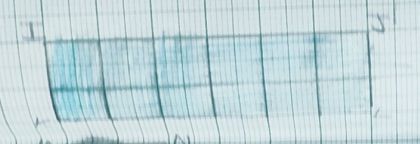Activity W4.7: Kho Kho – An Indian Tag Game and its Role in Developing Mathematical Thinking
Activities like games play an important role not only in physical development but also in the mental development of an individual.
They are helpful in the development of mathematical abilities of a student.
Playing tag games makes students more aware of space.
They learn strategies that can be applied to other games, sports, or activities.
It allows everyone an opportunity to play.
In most variations of tag, everyone is participating at the same time, and no one is waiting for their turn.
Kho Kho is a tag game of India. Its origins are as old as Mahabharata, with strategies and tactics likely derived from Mahabharata itself.
This game fosters many desirable traits such as sportsmanship, teamwork, loyalty, competitiveness, and self-esteem as well as speed, agility, strategy and quick thinking.
The qualities of strategy and quick thinking are essential for the development of mathematical thinking of a student, as they will be gradually exposed to higher layers of abstraction in mathematics.
Two teams face each other in this game (Team A and Team B).
The game starts with a toss between the two team captains.
The winning captain decides who will chase the other team. Both the teams consist of 12 players.
If Team A won the toss and decides to chase.
9 players from team A enter the playground.
All 9 players sit/kneel in the middle of the court facing the opposite direction in a straight row.
A match consists of two innings of running and chasing turns of 9 minutes.
From Team B, three players can enter the ground as the runner.
All 9 players of the team sit in a row with both the ends having a pole.
The 3 runners can go between two players of Team A who are sitting in a zigzag alignment.
The chaser team member is not to go through their sitting team members failing to it is a penalty.
They can only turn back and chase after
They touch the pole at either end of the line.
These are the basic rules to follow on the ground.
Students can be encouraged to devote some time for playing this game and discussion can be held on winning strategies.
Activity W4.7: Kho Kho – An Indian Tag Game and its Role in Developing Mathematical Thinking
Introduction
Games like Kho Kho are not only vital for physical development but also contribute significantly to the mental development of students. Playing such games enhances spatial awareness, strategic thinking, quick decision-making, and teamwork — skills closely linked with mathematical abilities.
What is Kho Kho?
Kho Kho is a traditional Indian tag game dating back to the era of the Mahabharata. It involves two teams (Team A and Team B), each with 12 players. The game starts with a toss, and the winning captain decides whether to chase or run.
Basic Rules (Summary)
-
Team A and Team B each have 12 players.
-
If Team A wins the toss and decides to chase, 9 players from Team A sit in the middle of the ground in a straight line facing opposite directions.
-
3 runners from Team B enter the ground and try to avoid being caught.
-
The runners run between the sitting players of Team A arranged in a zigzag pattern.
-
Chasers cannot cross over their teammates sitting in the line.
-
Chasers can only reverse direction after touching a pole at either end of the row.
-
A match consists of two innings of 9 minutes each for running and chasing.
Mathematical Thinking in Kho Kho
-
Spatial awareness: Understanding and navigating space between sitting players.
-
Strategy and planning: Deciding when and how to chase or evade.
-
Quick thinking: Reacting swiftly to opponents' moves.
-
Abstract thinking: Applying strategies developed here to complex problem-solving.
Discussion Questions and Sample Answers
Q1: How does Kho Kho help develop mathematical thinking?
Answer: Kho Kho requires players to plan moves, anticipate opponents’ actions, and use spatial reasoning—all of which build skills useful in mathematics such as logic, problem-solving, and abstract thinking.
Q2: What strategies can be used to chase effectively?
Answer: Chasers can use teamwork, communication, and knowledge of the rules (e.g., not crossing teammates, reversing at poles) to corner the runners efficiently.
Q3: How can understanding space and position help runners avoid being caught?
Answer: Runners must estimate distances and use gaps effectively to avoid being tagged, applying concepts of measurement and spatial reasoning.
Example Scenario
If Team A won the toss and chose to chase:
-
9 players sit in a straight line.
-
3 runners from Team B try to pass through gaps.
-
Chasers cannot cross teammates; they must touch poles to turn.
-
Teams plan strategies to maximize tagging success or evade capture.
Suggested Images for Presentation
-
Diagram of the Kho Kho playground setup: Showing the sitting line of Team A players, poles at both ends, and paths available for runners.
-
Illustration of a chase: With arrows showing runners' paths and chasers’ movement restrictions.
-
Historical depiction: Artwork or a traditional image referencing Kho Kho's origins in the Mahabharata.
-
Team play image: Photograph or cartoon showing teamwork and sportsmanship in Kho Kho.
Title Ideas for Presentation or Worksheets
-
Kho Kho: A Traditional Game Enhancing Math Skills
-
Tag and Think: Learning Math Through Kho Kho
-
Kho Kho – Strategy, Space, and Speed
-
From the Mahabharata to Math Class: The Story of Kho Kho







